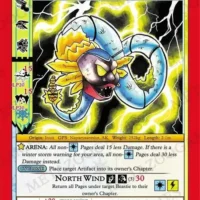Negafook : Spirit of the North Wind
Listen
At a glance
| Description | |
|---|---|
| Origin | Inuit Mythology |
| Classification | Spirits |
| Family Members | N/A |
| Region | Alaska, Greenland, Canada, Siberia |
| Associated With | North Wind, Cold Winds |
Negafook
Introduction
Negafook holds a revered place in Inuit mythology as the embodiment of the North Wind. This deity is integral to the Inuit religion, especially among the Yup’ik people, due to its association with cold and stormy weather. The unforgiving Arctic landscape, characterized by perpetual winter, has profoundly influenced Inuit beliefs for centuries. Within their pantheon of spirits (Inua), Negafook represents a formidable force—the very essence of the biting north wind and the challenging realities of the Arctic climate.
Physical Traits
Descriptions of Negafook’s physical appearance vary, reflecting a formidable presence in various accounts. Some depict him as a tall, gaunt figure with skin resembling ice and eyes akin to shimmering frozen lakes. Others describe long, white hair perpetually frozen to his face, whipped by the relentless Arctic wind. An artifact, a mask housed at the Metropolitan Museum of Art in New York City, offers a tangible glimpse into this mythic being. Carved from wood and adorned with vibrant colors, the mask features pronounced features—a prominent nose, a gaping mouth with protruding teeth, and furrowed brows that convey a perpetual scowl, symbolizing Negafook’s alignment with the harshness of the north wind.
This representation, often seen in Yup’ik masks, serves as a tangible symbol of Negafook’s presence and influence. Created for ceremonial use, the mask held by the Metropolitan Museum commemorates a significant weather event from the early 20th century, embodying Negafook’s association with the unforgiving elements of the Arctic. While traditional Inuit mythology does not explicitly detail Negafook’s physical traits, the deity’s connection to the cold and harsh aspects of the North Wind is vividly captured in these artistic interpretations.
Family
Negafook’s role within the intricate Inuit pantheon remains somewhat ambiguous, reflecting the complexity of their spiritual beliefs. While some narratives portray Negafook as a solitary entity, others suggest familial ties to other prominent Inua. One intriguing possibility links Negafook with Sedna, the sea goddess overseeing marine life. According to legends, Negafook may guide large sea creatures towards hunters during successful hunts. Alternatively, another theory posits Negafook as the son of Qailerjutan—the moon spirit—highlighting the connection between the night sky and the chilling temperatures of the Arctic.
Other names
Throughout the expansive Arctic territories inhabited by the Inuit, Negafook is known by a range of names, reflecting the diverse cultural expressions within Inuit communities. Among the Yup’ik people, he is commonly referred to as Negagfok, while speakers of Inuinnaqtun identify him as Qalupalik. These varied appellations all convey similar meanings, translating to “the spirit of the north wind” or “the one who brings the cold.” This linguistic diversity underscores the pervasive presence of the north wind and its profound significance in Inuit life. In Central Yup’ik, Negafook is also recognized as negeqvaruaq. Despite the distinct names used across regions including Alaska, Canada, Greenland, and Siberia, Negafook is universally acknowledged as the embodiment of the North Wind spirit.
Powers and Abilities
Negafook’s powers rival the very winds he embodies. He is believed to wield the ability to summon blizzards, whip icy winds across the tundra, and alter the temperature of the air itself. Legends recount how his breath alone can freeze entire landscapes, showcasing his complete mastery over the harsh Arctic climate. Some stories even suggest a connection between Negafook and hunting success, with hunters offering appeasements in exchange for favorable weather during critical expeditions. As the deity of cold weather, Negafook is associated with the capacity to create snow, ice, and freezing winds. His profound influence over the weather and the natural world underscores his formidable strength and significance within Inuit mythology.
Modern Day Influence
Despite the increasing globalization of the world, Negafook’s legacy remains robust among the Inuit people. His likeness continues to feature prominently in traditional art forms, especially in carvings and masks used during ceremonial dances. These artistic depictions serve as poignant reminders of the power and influence of the natural world, emphasizing the necessity of respecting the challenging environment that sustains Inuit communities.
Beyond the confines of Inuit culture, Negafook has permeated popular culture. Comic books and video games have introduced characters inspired by this formidable spirit, often portraying him as a villain or antagonist. While these interpretations may diverge from traditional Inuit beliefs, they underscore the enduring allure of Negafook’s raw power.
Moreover, Negafook’s impact extends beyond mythology into contemporary culture. A mask representing Negafook is housed at the Metropolitan Museum of Art in New York City, serving as a tangible symbol of the Inuit people’s rich cultural heritage. Negafook’s narrative continues to inspire and influence modern interpretations of Inuit mythology, prompting reflection on the potent forces of nature and our interconnectedness with the natural world.
Related Images
Frequently Asked Questions
What is lorem Ipsum?
I am text block. Click edit button to change this text. Lorem ipsum dolor sit amet, consectetur adipiscing elit. Ut elit tellus, luctus nec ullamcorper mattis, pulvinar dapibus leo.
What is lorem Ipsum?
I am text block. Click edit button to change this text. Lorem ipsum dolor sit amet, consectetur adipiscing elit. Ut elit tellus, luctus nec ullamcorper mattis, pulvinar dapibus leo.
What is lorem Ipsum?
I am text block. Click edit button to change this text. Lorem ipsum dolor sit amet, consectetur adipiscing elit. Ut elit tellus, luctus nec ullamcorper mattis, pulvinar dapibus leo.
What is lorem Ipsum?
I am text block. Click edit button to change this text. Lorem ipsum dolor sit amet, consectetur adipiscing elit. Ut elit tellus, luctus nec ullamcorper mattis, pulvinar dapibus leo.
What is lorem Ipsum?
I am text block. Click edit button to change this text. Lorem ipsum dolor sit amet, consectetur adipiscing elit. Ut elit tellus, luctus nec ullamcorper mattis, pulvinar dapibus leo.












